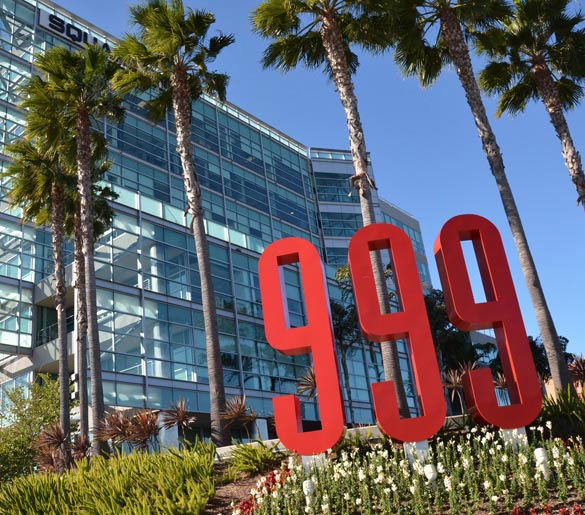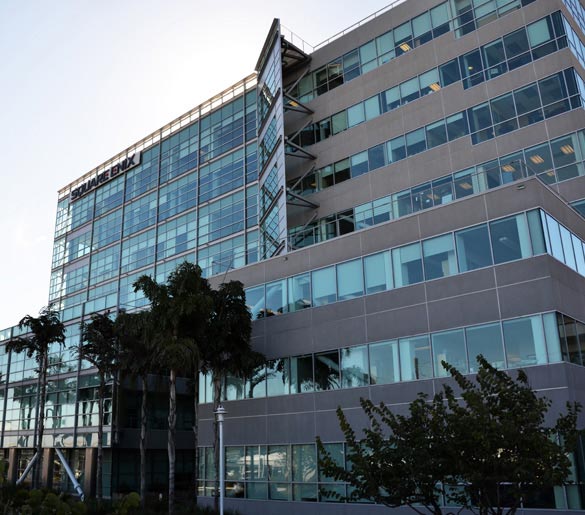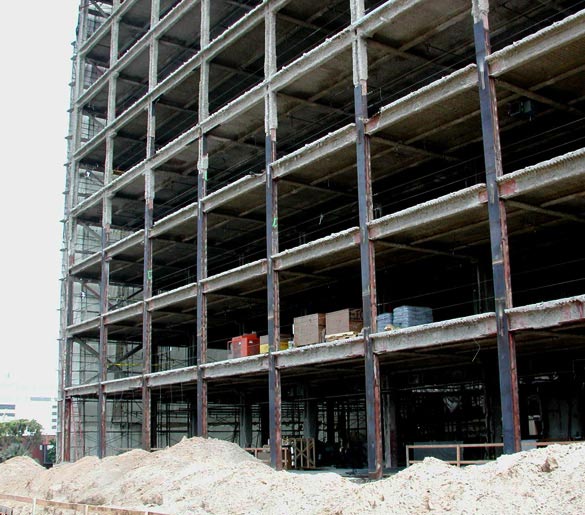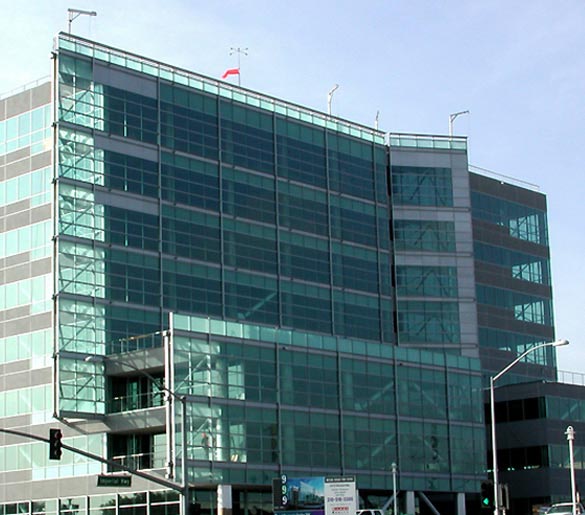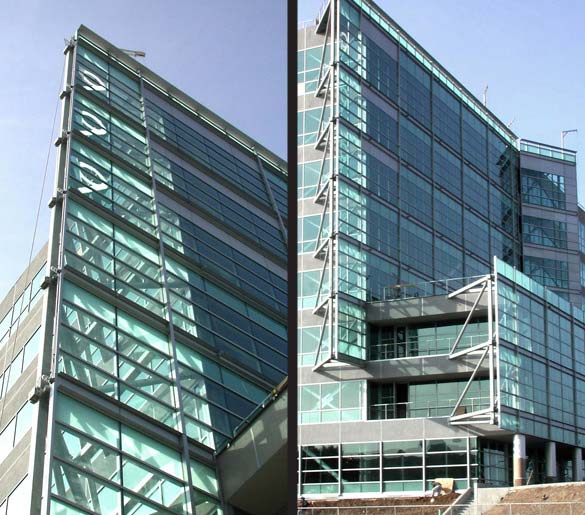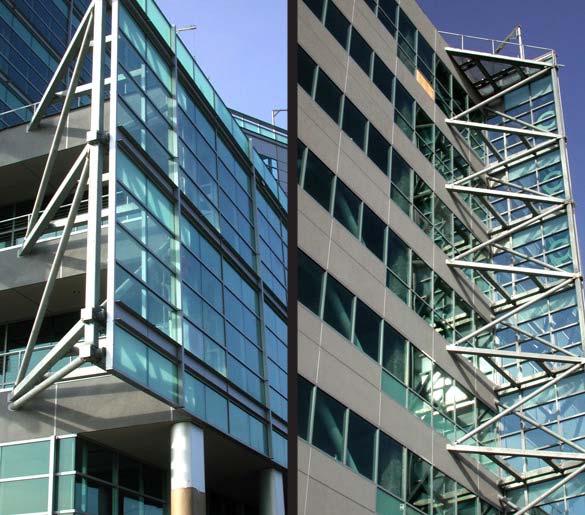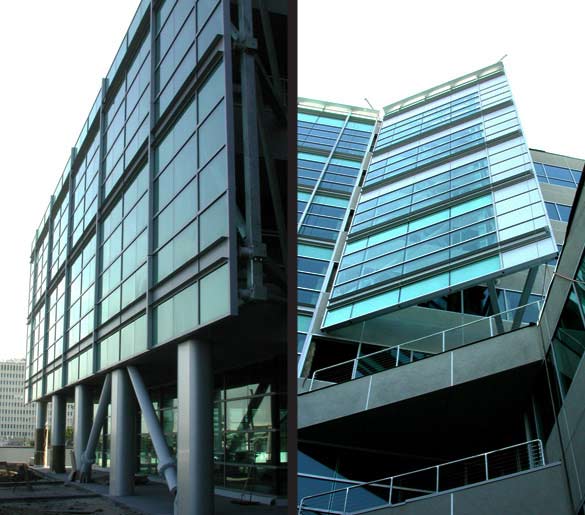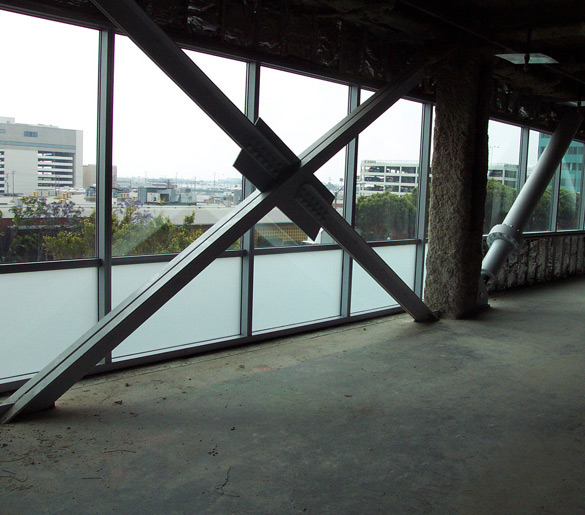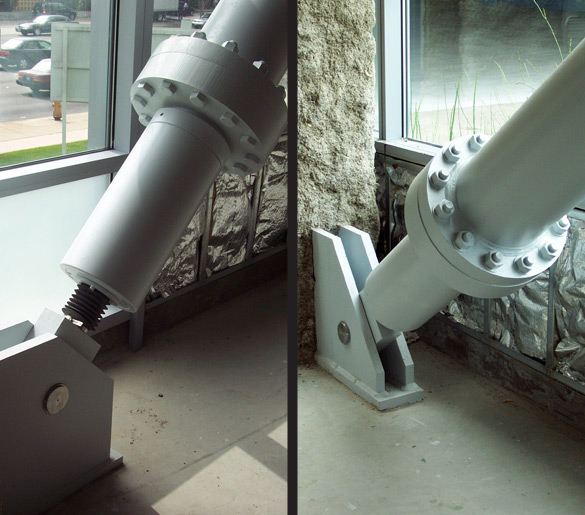KILROY 999 NORTH SEPULVEDA
LOCATION
El Segundo, California
PROJECT
A major re-model of a 1962 vintage steel-framed mid-rise office tower and the construction of a new adjacent structurally-attached three (3) story office tower addition.
SCOPE
This Project involved the use of fluid viscous dampers to seismically-retrofit an existing prismatic eight (8) story office tower. A major re-model and adjacent three (3) story addition necessitated the seismic retrofitting of the existing office tower such that the existing tower and structurally-attached addition construction complied with the seismic provisions of the Uniform Building Code, 1997 Edition.
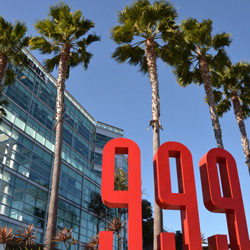
FURTHER DETAILS
The prime concern in the structural design process was to find a cost-effective solution to upgrade the existing structural steel X-braced transverse seismic frames above the Second Floor at end wall conditions and the orthogonally-oriented bolted, cover-plated seismic moment frame construction without undertaking the costly, labor intensive augmentation of individual lateral force-resisting elements and connections. Utilization of sixty (60) fluid viscous dampers installed at the ends of brace-like extender elements in both diagonal and chevron configurations significantly increased the overall structural equivalent viscous damping without appreciably affecting the natural periods of vibration of the lateral force-resisting system. Their sole purpose is to absorb and dissipate energy imparted to the structure during an earthquake. In doing so, they protect the structural system against seismically-induced stress overloads and provide effective inter-story distortion control within acceptable limits during adverse seismic conditions. Depending upon the nature, intensity and characteristics of the earthquake ground motion excitation, the fluid viscous damper retrofit system is designed to be capable of absorbing and dissipating at least two-thirds of the earthquake energy imparted to the structural system and represents a cost-effective solution in significantly improving seismic risk and safety.

